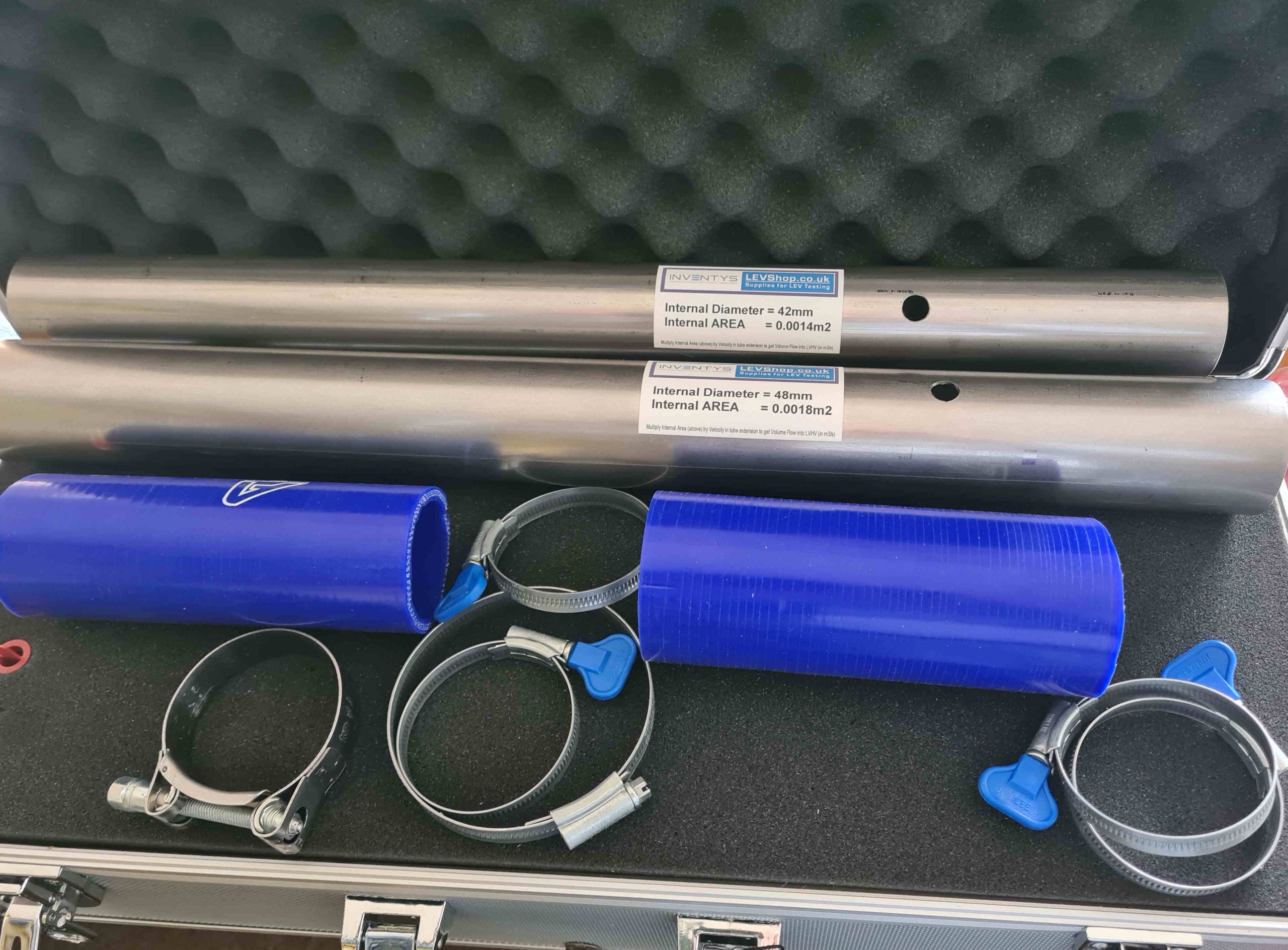Your basket is currently empty!

LVHV (Welding Torch On-Tool Extraction) Test Kit/Adaptor
NEW Updated Kit (3 adaptor tube diameters) This kit now contains three stainless steel welding torch adaptor head tubes – 48mm ID, 42mm and 35mm ID 10mm Test Points drilled at one end of each tube for Pitot Tube access to obtain velocities in adaptor tubes. Pitot not supplied but see: 305mm TSI Pitot Complete…
In stock
Description
NEW Updated Kit (3 adaptor tube diameters)
This kit now contains three stainless steel welding torch adaptor head tubes – 48mm ID, 42mm and 35mm ID
10mm Test Points drilled at one end of each tube for Pitot Tube access to obtain velocities in adaptor tubes. Pitot not supplied but see: 305mm TSI Pitot
Complete with silicone rubber adaptor hose sections to attach to welding torch head and several quick-attach ‘wing’ Jubilee clips.
Ideal for undertaking quantitative TExT examinations at “on-tool” Welding Torch fume extraction heads (LVHV).
The kit meets HSE requirements as set out in their FAQ section of their website. See this link (third bottom button on page) for details of HSE’s views on LVHV testing http://www.hse.gov.uk/lev/faqs.htm
HSE Guidance: – “A Pitot static tube – This can be used in conjunction with a ‘test piece’ of smooth walled duct or pipe attached to the extraction unit inlet.
Pre-drill a small hole into this test piece. Locate the Pitot static tube through this hole ensuring that it sits in the centre of the ducting.
It should sit at least 7 times the diameter away from the opening not attached to the extraction inlet (eg 350 mm for a 50mm diameter duct). This allows the airflow to develop and provide more accurate/stable readings.
The air velocity in circular ducts is not uniform, the centreline velocity is typically 1.2 times the average velocity. Simply divide the centreline velocity by 1.2 to give an estimate of the average velocity.”
In line with HSE’s advice the principle of of operation of this LEVShop On-Torch adaptor kit is that the silicone rubber adaptor is connected to the appropriate 500mm stainless steel extension tube and the other end of the adaptor hose is attached to the welding torch (being careful not to block the air extract holes) and tightened down using the winglock jubilee clips.
A small Pitot tube (not included but see TSI 305mm Pitot Tube) can then be used to obtain a representative flowrate and static pressure at the LVHV head.
Kit comes complete with carry case.

